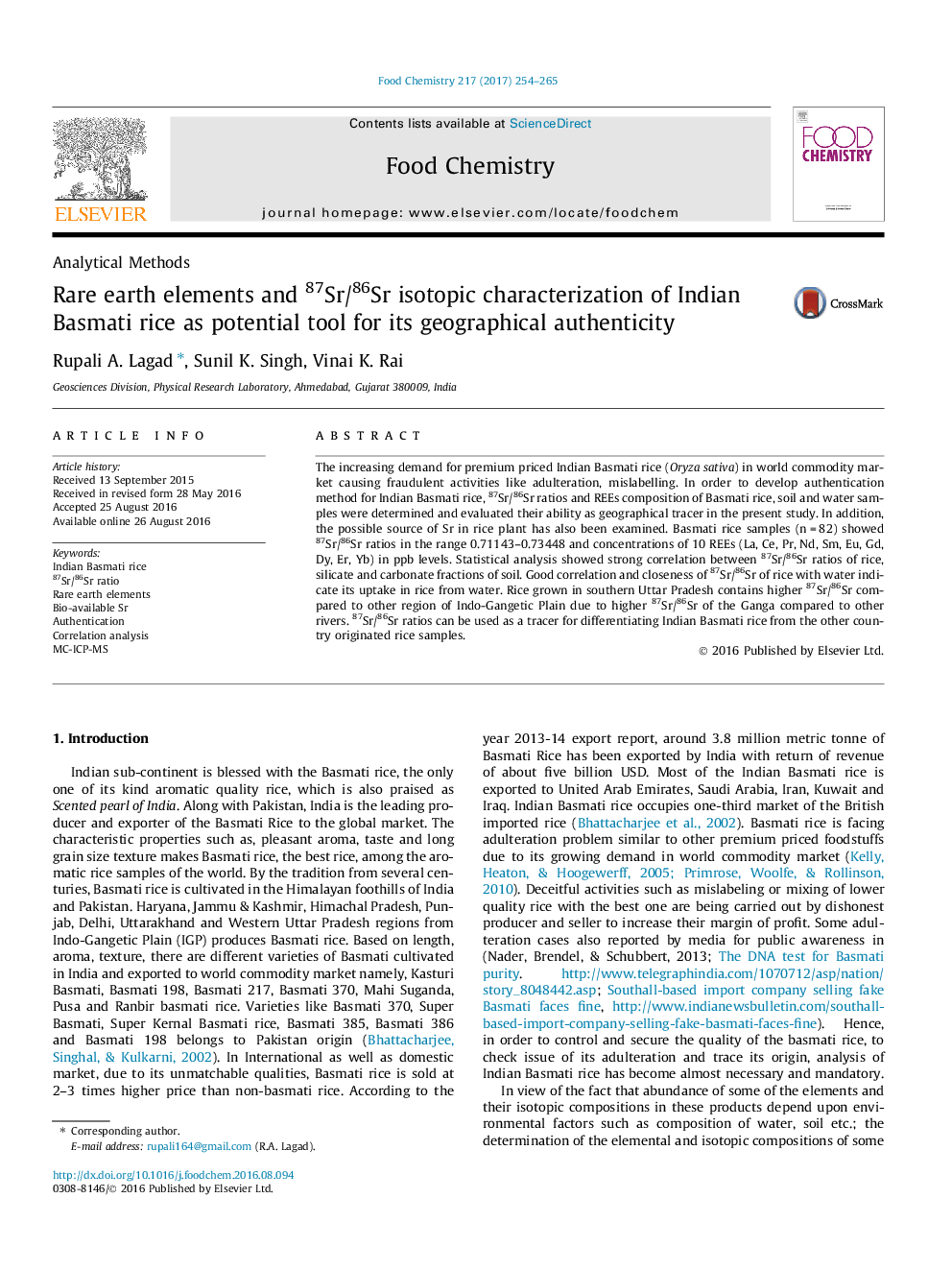| Article ID | Journal | Published Year | Pages | File Type |
|---|---|---|---|---|
| 1184759 | Food Chemistry | 2017 | 12 Pages |
•87Sr/86Sr ratios and REEs patterns of Indian Basmati rice samples were evaluated for geographical tracer.•Uttar Pradesh originated rice found comparatively more radiogenic for 87Sr/86Sr.•Indian Basmati rice showed significant different 87Sr/86Sr ratios than other regions.•Strong correlation observed between 87Sr/86Sr of rice, silicates, carbonates and irrigation water.•Water seems to be the possible source of Sr in rice plant.
The increasing demand for premium priced Indian Basmati rice (Oryza sativa) in world commodity market causing fraudulent activities like adulteration, mislabelling. In order to develop authentication method for Indian Basmati rice, 87Sr/86Sr ratios and REEs composition of Basmati rice, soil and water samples were determined and evaluated their ability as geographical tracer in the present study. In addition, the possible source of Sr in rice plant has also been examined. Basmati rice samples (n = 82) showed 87Sr/86Sr ratios in the range 0.71143–0.73448 and concentrations of 10 REEs (La, Ce, Pr, Nd, Sm, Eu, Gd, Dy, Er, Yb) in ppb levels. Statistical analysis showed strong correlation between 87Sr/86Sr ratios of rice, silicate and carbonate fractions of soil. Good correlation and closeness of 87Sr/86Sr of rice with water indicate its uptake in rice from water. Rice grown in southern Uttar Pradesh contains higher 87Sr/86Sr compared to other region of Indo-Gangetic Plain due to higher 87Sr/86Sr of the Ganga compared to other rivers. 87Sr/86Sr ratios can be used as a tracer for differentiating Indian Basmati rice from the other country originated rice samples.
